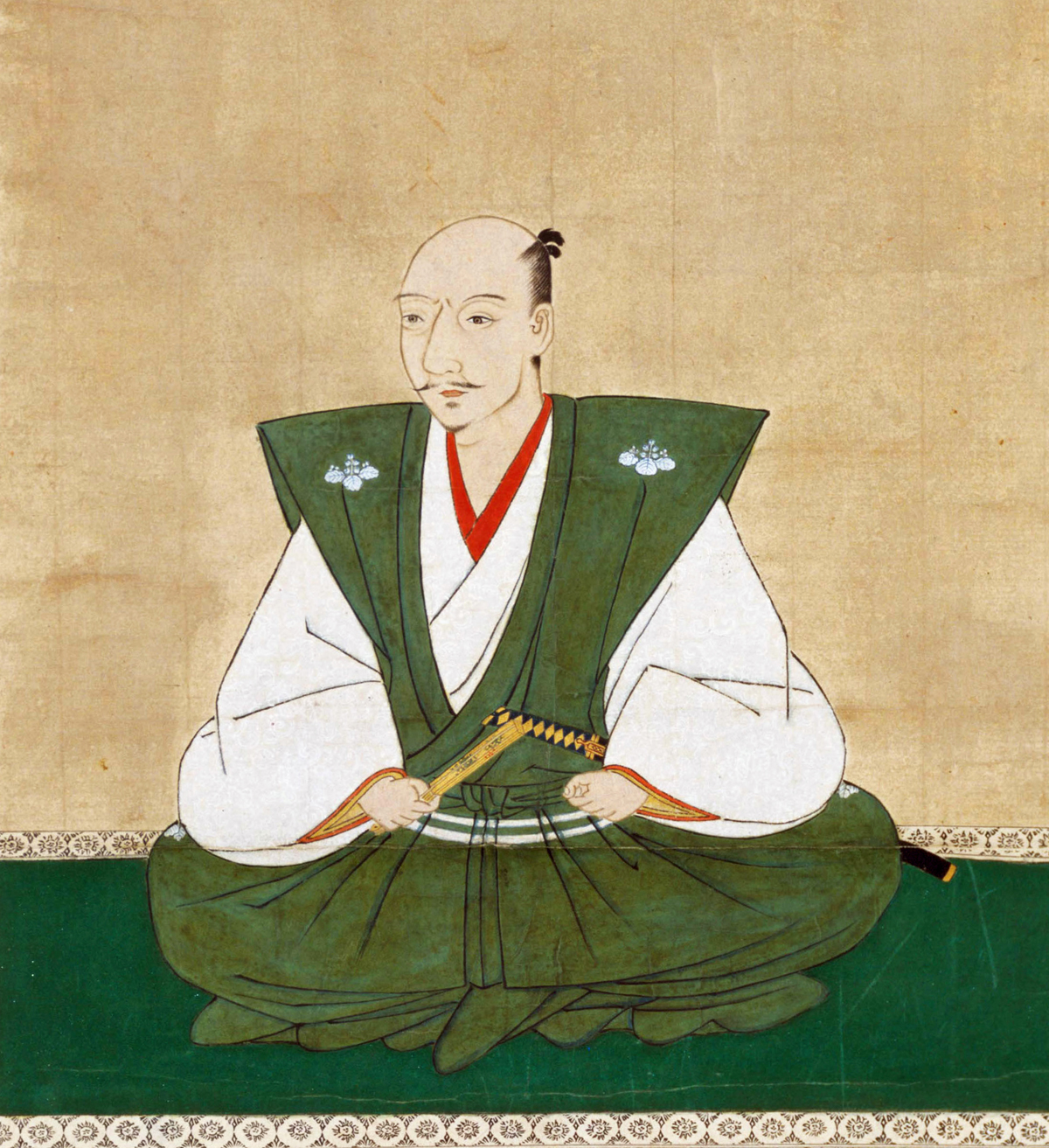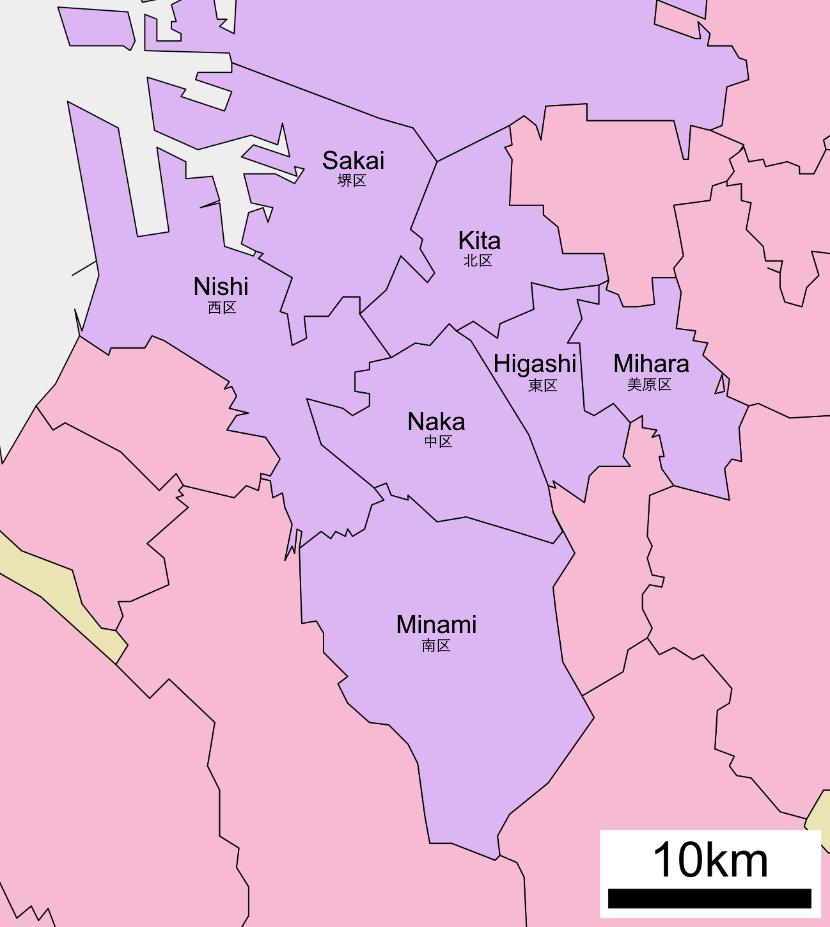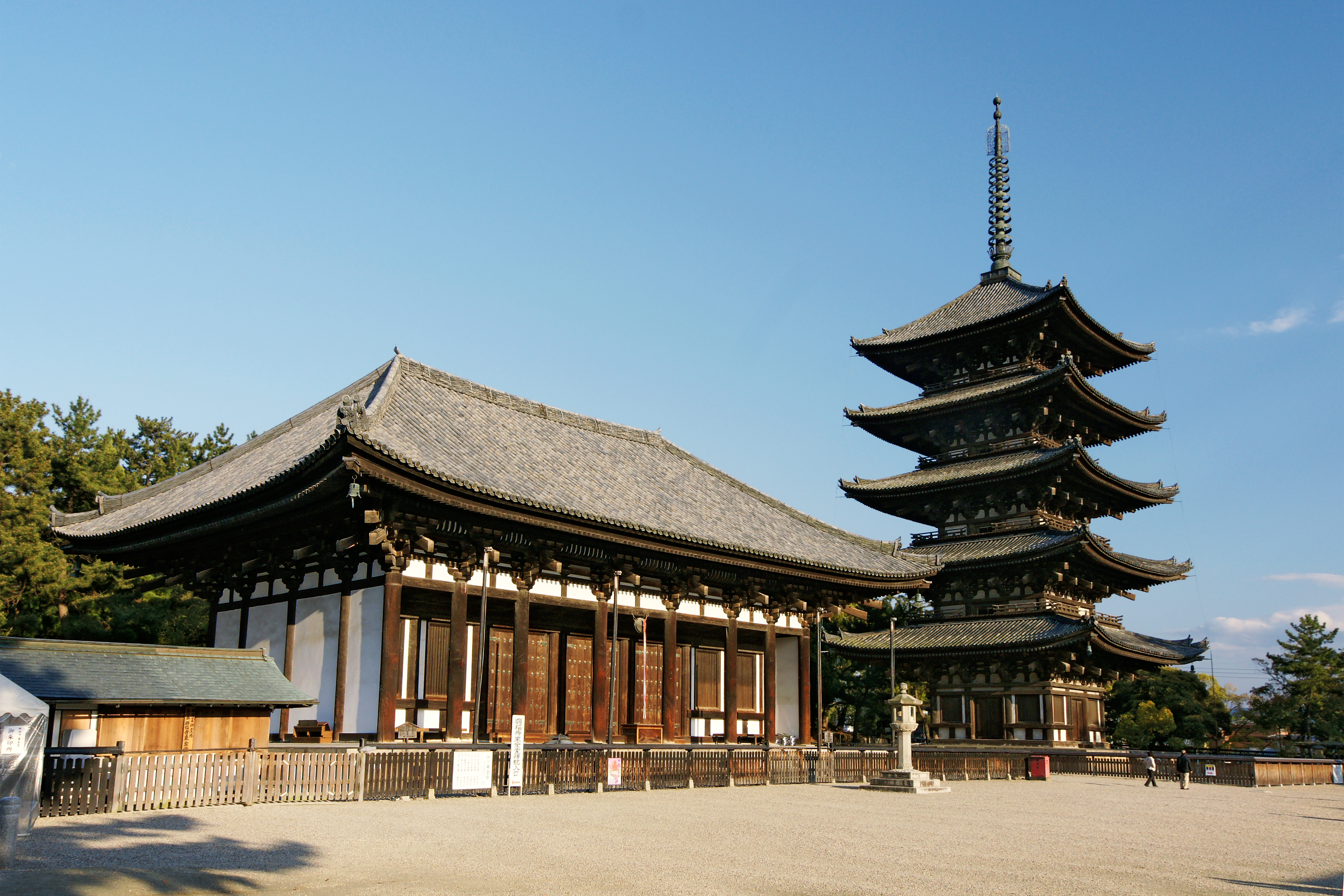|
Revolt Of Ashikaga Yoshiaki
The Revolt of Ashikaga Yoshiaki (Japanese language, Japanese: 足利義昭の乱) or better known as Nobunaga Encirclement (信長包囲網) took place in 1573 and was led by Ashikaga Yoshiaki, the 15th Shogun of Japan and its last Shogun from the Ashikaga clan. Yoshiaki became shogun in 1568 with the support of Oda Nobunaga. The Oda clan's forces entered Kyoto, restoring the Muromachi period, Muromachi shogunate. This takeover was swift due to the lack of effective central authority in Kyoto at the time. Yoshiaki then acted as a Puppet state, puppet leader under Nobunaga's direct control. In 1573, Yoshiaki revolted against Nobunaga, seeking to establish his own control. To aid him in the uprising, Yoshiaki called upon the Takeda clan, Takeda and Matsunaga clan, Matsunaga clans. Yoshiaki attempted to flee Kyoto and find refuge in Sakai. Despite his efforts, Nobunaga pursued Yoshiaki and recaptured Kyoto, effectively ending the Ashikaga clan's rule. Background The Ashikaga clan r ... [...More Info...] [...Related Items...] OR: [Wikipedia] [Google] [Baidu] |
Kyoto
Kyoto ( or ; Japanese language, Japanese: , ''Kyōto'' ), officially , is the capital city of Kyoto Prefecture in the Kansai region of Japan's largest and most populous island of Honshu. , the city had a population of 1.46 million, making it the List of cities in Japan, ninth-most populous city in Japan. More than half (56.8%) of Kyoto Prefecture's population resides in the city. The city is the cultural anchor of the substantially larger Greater Kyoto, a metropolitan statistical area (MSA) home to a census-estimated 3.8 million people. It is also part of the even larger Keihanshin, Keihanshin metropolitan area, along with Osaka and Kobe. Kyoto is one of the oldest municipalities in Japan, having been chosen in 794 as the new seat of Japan's imperial court by Emperor Kanmu. The original city, named Heian-kyō, was arranged in accordance with traditional Chinese feng shui following the model of the ancient Chinese capitals of Chang'an and Luoyang. The emperors of Japan ruled fro ... [...More Info...] [...Related Items...] OR: [Wikipedia] [Google] [Baidu] |
Sakai
is a city located in Osaka Prefecture, Japan. It has been one of the largest and most important seaports of Japan since the medieval era. Sakai is known for its '' kofun'', keyhole-shaped burial mounds dating from the fifth century. The ''kofun'' in Sakai include the largest grave in the world by area, Daisen Kofun. Once known for swords, Sakai is now famous for the quality of its cutlery. , the city had an estimated population of 819,965, making it the fourteenth most populous city in Japan (excluding Tokyo). Geography Sakai is located in southern Osaka Prefecture, on the edge of Osaka Bay and directly south of the city of Osaka. Neighboring municipalities Osaka Prefecture * Habikino * Izumi * Kawachinagano * Matsubara *Osaka * Ōsakasayama * Takaishi Climate Sakai has a Humid subtropical climate (Köppen ''Cfa'') characterized by warm summers and cool winters with light to no snowfall. The average annual temperature in Sakai is . The average annual rainfall is with June ... [...More Info...] [...Related Items...] OR: [Wikipedia] [Google] [Baidu] |
Kōfuku-ji
is a Buddhist temple that was once one of the powerful Seven Great Temples in the city of Nara, Japan. The temple is the national headquarters of the Hossō school. It is part of Historic Monuments of Ancient Nara, a World Heritage Site. History Kōfuku-ji has its origin as a temple that was established in 669 by Kagami-no-Ōkimi (), the wife of Fujiwara no Kamatari, wishing for her husband's recovery from illness. Its original site was in Yamashina, Yamashiro Province (present-day Kyoto). In 672, the temple was moved to Fujiwara-kyō, the first planned Japanese capital to copy the orthogonal grid pattern of Chang'an. In 710, the temple was dismantled for the second time and moved to its present location, on the east side of the newly constructed capital, Heijō-kyō, today's Nara. Kōfuku-ji was the Fujiwara's tutelary temple, and enjoyed prosperity for as long as the family did. The temple was not only an important center for the Buddhist religion, but also retained ... [...More Info...] [...Related Items...] OR: [Wikipedia] [Google] [Baidu] |
Figurehead
In politics, a figurehead is a practice of who ''de jure'' (in name or by law) appears to hold an important and often supremely powerful title or office, yet '' de facto'' (in reality) exercises little to no actual power. This usually means that they are head of state, but not head of government. The metaphor derives from the carved figurehead at the prow of a sailing ship. Examples Heads of state in most constitutional monarchies and parliamentary republics are often considered to be figureheads. Commonly cited ones include the monarch of the United Kingdom, who is also head of state of the other Commonwealth realms and head of the Commonwealth, but has no power over the nations in which the sovereign is not head of government and does not exercise power in the realms on their own initiative. Other figureheads include the Emperor of Japan and the Swedish monarch, as well as presidents in a majority of parliamentary republics, such as the presidents of Austria, Bangladesh, ... [...More Info...] [...Related Items...] OR: [Wikipedia] [Google] [Baidu] |
Ashikaga Yoshihide
was the 14th ''shōgun'' of the Ashikaga shogunate who held nominal power for a few months in 1568 during the Muromachi period of Japan. When he became ''shōgun'', he changed his name to Yoshinaga, but he is more conventionally recognized today by the name Yoshihide. In 1568, Yoshihide became '' Sei-i Taishōgun'' three years after the death of his cousin, the thirteenth ''shōgun'' Ashikaga Yoshiteru. Biography Shortly after having been proclaimed ''shōgun'', Yoshihide died from a contagious disease. In the same month, Oda Nobunaga marched his armies into Kyoto. He seized control of the capital. Nobunaga installed Ashikaga Yoshiaki as the fifteenth ''shōgun''. Family * Father: Ashikaga Yoshitsuna * Mother: daughter of Ouchi Yoshiyuki * Wife: Yuki no Tsubone Era of Yoshihide's ''bakufu'' The year in which Yoshihide was shogun is encompassed within a single era name or ''nengō''.Titsingh, *'' Eiroku'' (1558–1570) Notes References * Ackroyd, Joyce. (1982) ''Les ... [...More Info...] [...Related Items...] OR: [Wikipedia] [Google] [Baidu] |
Homosexuality
Homosexuality is romantic attraction, sexual attraction, or Human sexual activity, sexual behavior between people of the same sex or gender. As a sexual orientation, homosexuality is "an enduring pattern of emotional, romantic, and/or sexual attractions" exclusively to people of the same sex or gender. It also denotes Sexual identity, identity based on attraction, related behavior, and community affiliation. Along with bisexuality and heterosexuality, homosexuality is one of the three main categories of sexual orientation within the heterosexual–homosexual continuum. Although no single theory on the cause of sexual orientation has yet gained widespread support, scientists favor Biology and sexual orientation, biological theories. There is considerably more evidence supporting nonsocial, biological causes of sexual orientation than social ones, especially for males. A major hypothesis implicates the Prenatal development, prenatal environment, specifically the organizationa ... [...More Info...] [...Related Items...] OR: [Wikipedia] [Google] [Baidu] |
Luís Fróis
Luís Fróis (1532 – 8 July 1597) was a Portuguese Catholic priest and missionary who worked in Asia, most notably Japan, during the second half of the 16th century. As a Jesuit, he preached in Japan during the Sengoku period, meeting with Oda Nobunaga and Toyotomi Hideyoshi. He is famous for writing ''The First European Description of Japan'' and ''History of Japan''. Biography Fróis was born in Lisbon in 1532. He was educated at the court of King João III of Portugal, where a close relative served as a scribe. At an early age, he started working for the Royal Secretary's office. In 1548, he joined the Jesuits traveling to Portuguese India to study at Saint Paul's College, Goa. He arrived in Goa on 4 September 1548. One of his teachers described Fróis' character as tough and good natured but not religious. There he met Francis Xavier, who was about to depart for his mission to Japan, and his Japanese collaborator Anjirō. During his stay in Goa, Fróis reported on t ... [...More Info...] [...Related Items...] OR: [Wikipedia] [Google] [Baidu] |
Seppuku
, also known as , is a form of Japanese ritualistic suicide by disembowelment. It was originally reserved for samurai in their code of honor, but was also practiced by other Japanese people during the Shōwa era (particularly officers near the end of World War II) to restore honor for themselves or for their families. As a samurai practice, ''seppuku'' was used voluntarily by samurai to die with honor rather than fall into the hands of their enemies (and likely be tortured), as a form of capital punishment for samurai who had committed serious offenses, or performed because they had brought shame to themselves. The ceremonial disembowelment, which is usually part of a more elaborate ritual and performed in front of spectators, consists of plunging a short blade, traditionally a '' tantō'', into the belly and drawing the blade from left to right, slicing the belly open. If the cut is deep enough, it can sever the abdominal aorta, causing death by rapid exsanguination. One ... [...More Info...] [...Related Items...] OR: [Wikipedia] [Google] [Baidu] |
Coup D'état
A coup d'état (; ; ), or simply a coup , is typically an illegal and overt attempt by a military organization or other government elites to unseat an incumbent leadership. A self-coup is said to take place when a leader, having come to power through legal means, tries to stay in power through illegal means. By one estimate, there were 457 coup attempts from 1950 to 2010, half of which were successful. Most coup attempts occurred in the mid-1960s, but there were also large numbers of coup attempts in the mid-1970s and the early 1990s. Coups occurring in the post-Cold War period have been more likely to result in democratic systems than Cold War coups, though coups still mostly perpetuate authoritarianism. Many factors may lead to the occurrence of a coup, as well as determine the success or failure of a coup. Once a coup is underway, coup success is driven by coup-makers' ability to get others to believe that the coup attempt will be successful. The number of successful cou ... [...More Info...] [...Related Items...] OR: [Wikipedia] [Google] [Baidu] |
Nijō Castle
is a flatland Japanese castle, castle in Kyoto, Japan. The castle consists of two concentric rings (Kuruwa) of fortifications, the Ninomaru Palace, the ruins of the Honmaru Palace, various support buildings and several gardens. The surface area of the castle is , of which is occupied by buildings. It is one of the seventeen Historic Monuments of Ancient Kyoto which have been designated by UNESCO as a World Heritage Site. History In 1601, Tokugawa Ieyasu, the founder of the Tokugawa shogunate, ordered all the Daimyō, feudal lords in western Japan to contribute to the construction of Nijō Castle, which was completed during the reign of his grandson Tokugawa Iemitsu in 1626. While the castle was being built, a portion of land from the partially abandoned Shinsenen Garden (originally part of the imperial palace and located south) was absorbed, and its abundant water was used in the castle gardens and ponds. Parts of Fushimi Castle, such as the main tower and the ''karamon'', w ... [...More Info...] [...Related Items...] OR: [Wikipedia] [Google] [Baidu] |
Miyoshi Yoshitsugu
, adopted son of Nagayoshi, was a samurai of the Sengoku period who was practically the last head of Miyoshi clan, ''daimyō'' of Kawachi Province of Japan. His wife was Ashikaga Yoshiaki's sister. Born to Sogō Kazumasa in 1549, younger brother of Miyoshi Nagayoshi, he was initially known as Sogō Shigemasa (). After 1561 when his father died, he was reared by Nagayoshi. When Nagayoshi's eldest son Yoshioki died in 1563, he was adopted as a son and changed his surname In many societies, a surname, family name, or last name is the mostly hereditary portion of one's personal name that indicates one's family. It is typically combined with a given name to form the full name of a person, although several give ... to ''Miyoshi''. The following year when Nagayoshi died, Yoshitsugu succeeded him as head of the clan. References Samurai Daimyo Miyoshi clan 1549 births 1573 deaths {{Daimyo-stub ... [...More Info...] [...Related Items...] OR: [Wikipedia] [Google] [Baidu] |
Matsunaga Hisahide
Matsunaga Danjō Hisahide (松永 弾正 久秀 1508 – November 19, 1577) was a ''daimyō'' and head of the Yamato Matsunaga clan in Japan during the Sengoku period of the 16th century. He has historical reputation as one of , a nickname which he shared with Ukita Naoie and Saitō Dōsan, due to their ambitious and treasonous personality, along with the habit to resort into underhanded tactics and assassinations to eliminate the oppositions. Biography He was a retainer of Miyoshi Nagayoshi from the 1540s. He directed the conquest of the province of Yamato in the 1560s and by 1564 had built a sufficient power base to be effectively independent. It is believed that he was conspiring against Nagayoshi during this period; from 1561 to 1563 three of Nagayoshi's brothers and his son, Yoshiaki, died. This left Miyoshi Yoshitsugu the adopted heir when Nagayoshi died in 1564, too young to rule. Three men shared his guardianship – Miyoshi Nagayuki, Miyoshi Masayasu, ... [...More Info...] [...Related Items...] OR: [Wikipedia] [Google] [Baidu] |







